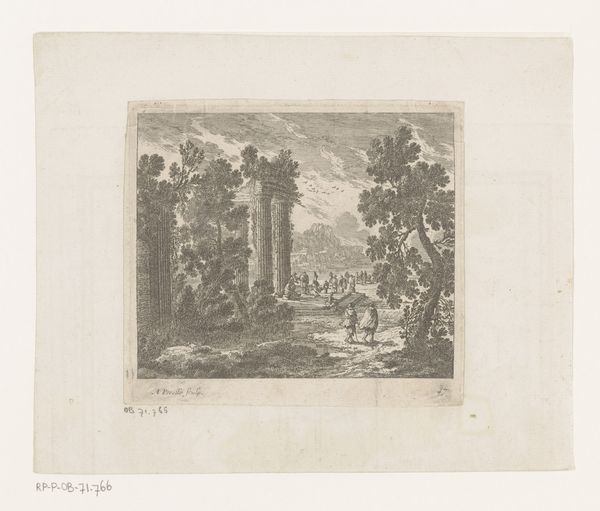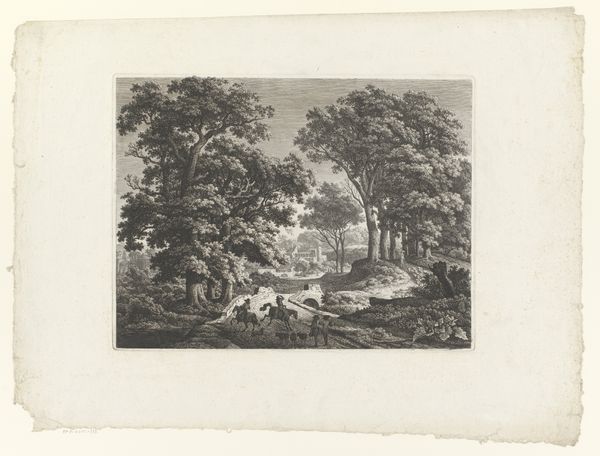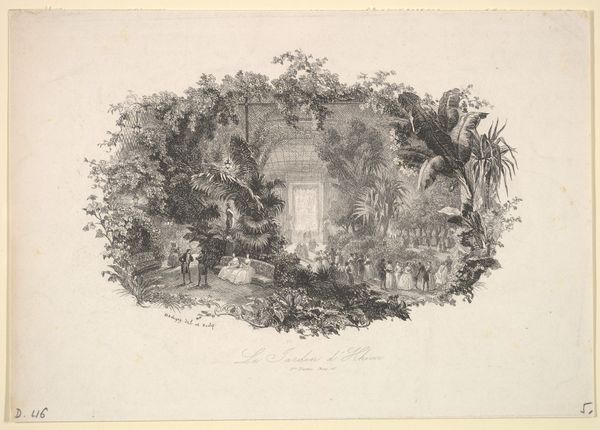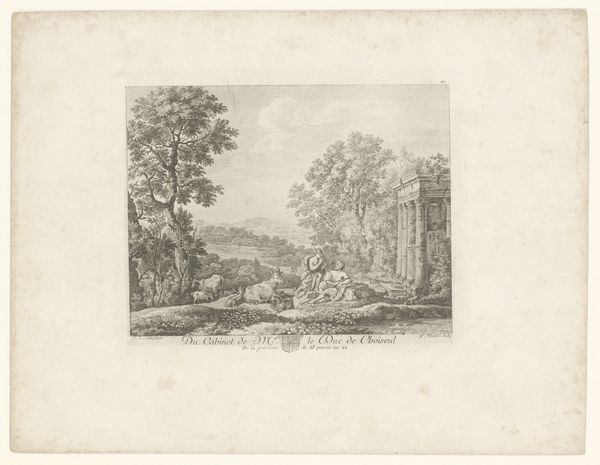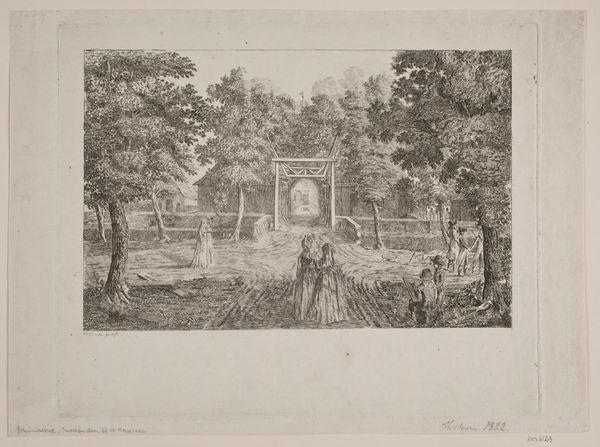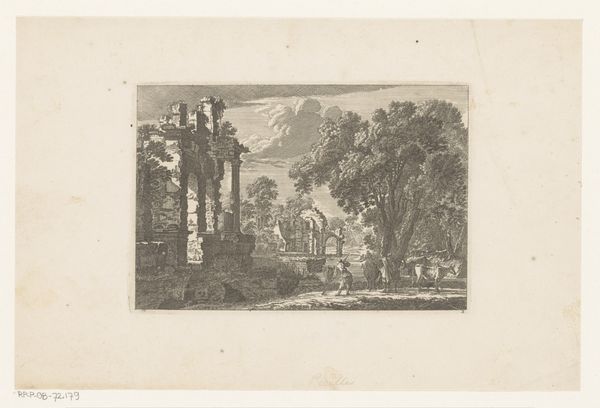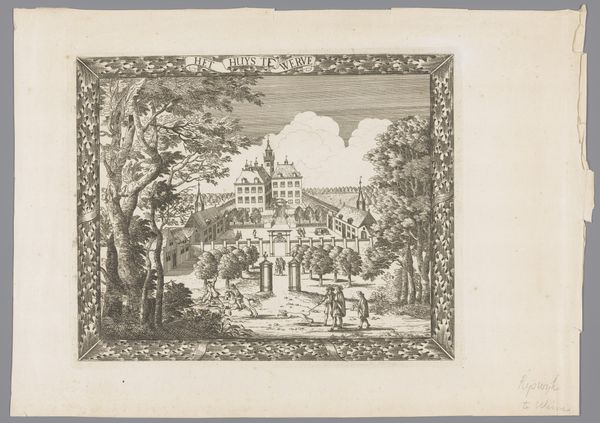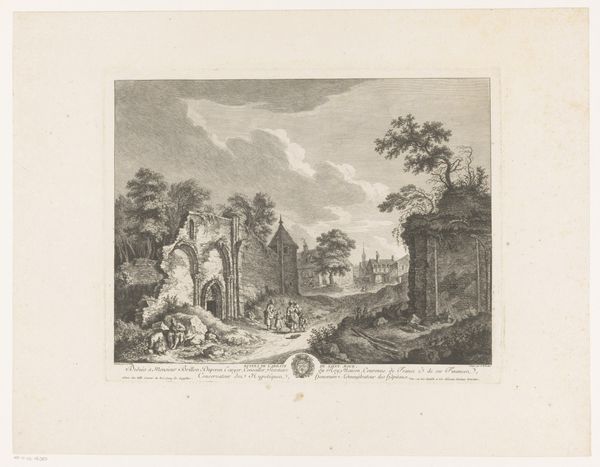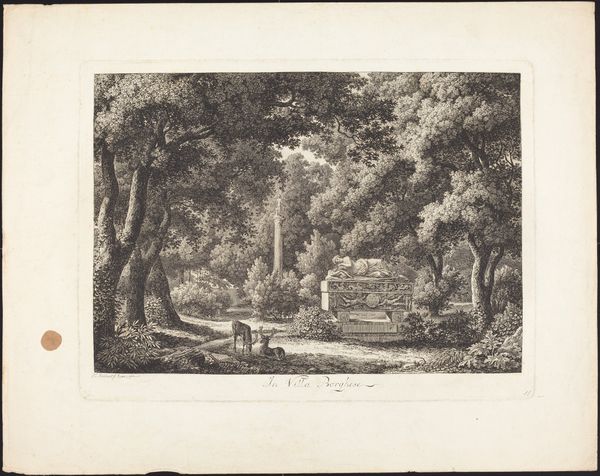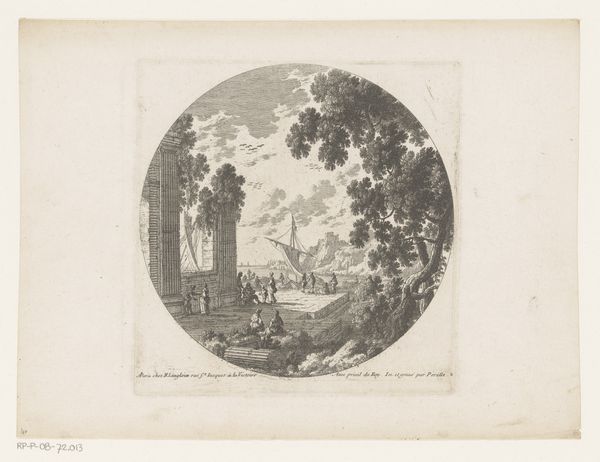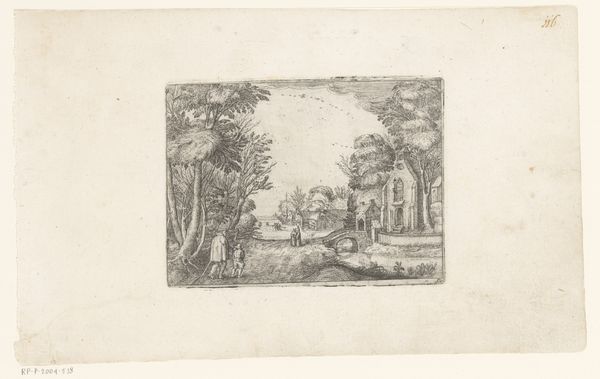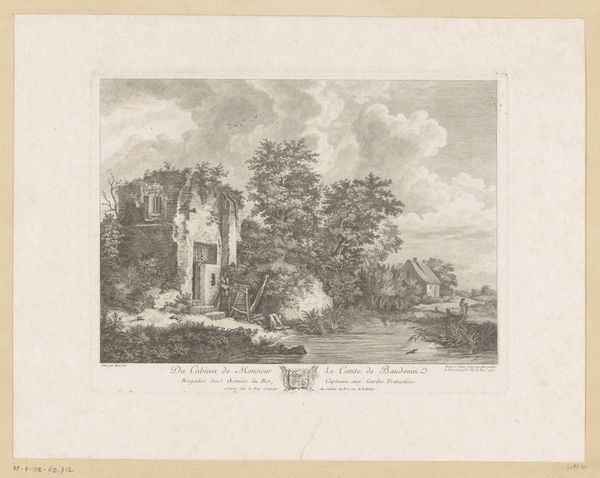
Dimensions: height 165 mm, width 203 mm
Copyright: Rijks Museum: Open Domain
Salomon Gessner made this print, "Herders bij een antieke ruïne aan het water," using etching, a printmaking technique, sometime in the late 18th century. Etching involves coating a metal plate with a waxy, acid-resistant substance. The artist then scratches an image into the wax, exposing the metal. When the plate is dipped in acid, the exposed lines are eaten away. The deeper the bite, the more ink it holds, and the darker the resulting line in the print. This process has a particular social context, and an implicit relationship to labor. Etching allowed for the relatively easy reproduction of images, making art more accessible to a wider public, moving away from unique artworks only available to the wealthy. The image, showing idealized shepherds in a landscape, reflects a longing for a simpler, pre-industrial life, even as the etching process itself was part of an emerging industrialized world of image production. By understanding etching, we can better understand not only the image itself, but the social and economic forces that shaped its creation and distribution.
Comments
No comments
Be the first to comment and join the conversation on the ultimate creative platform.
